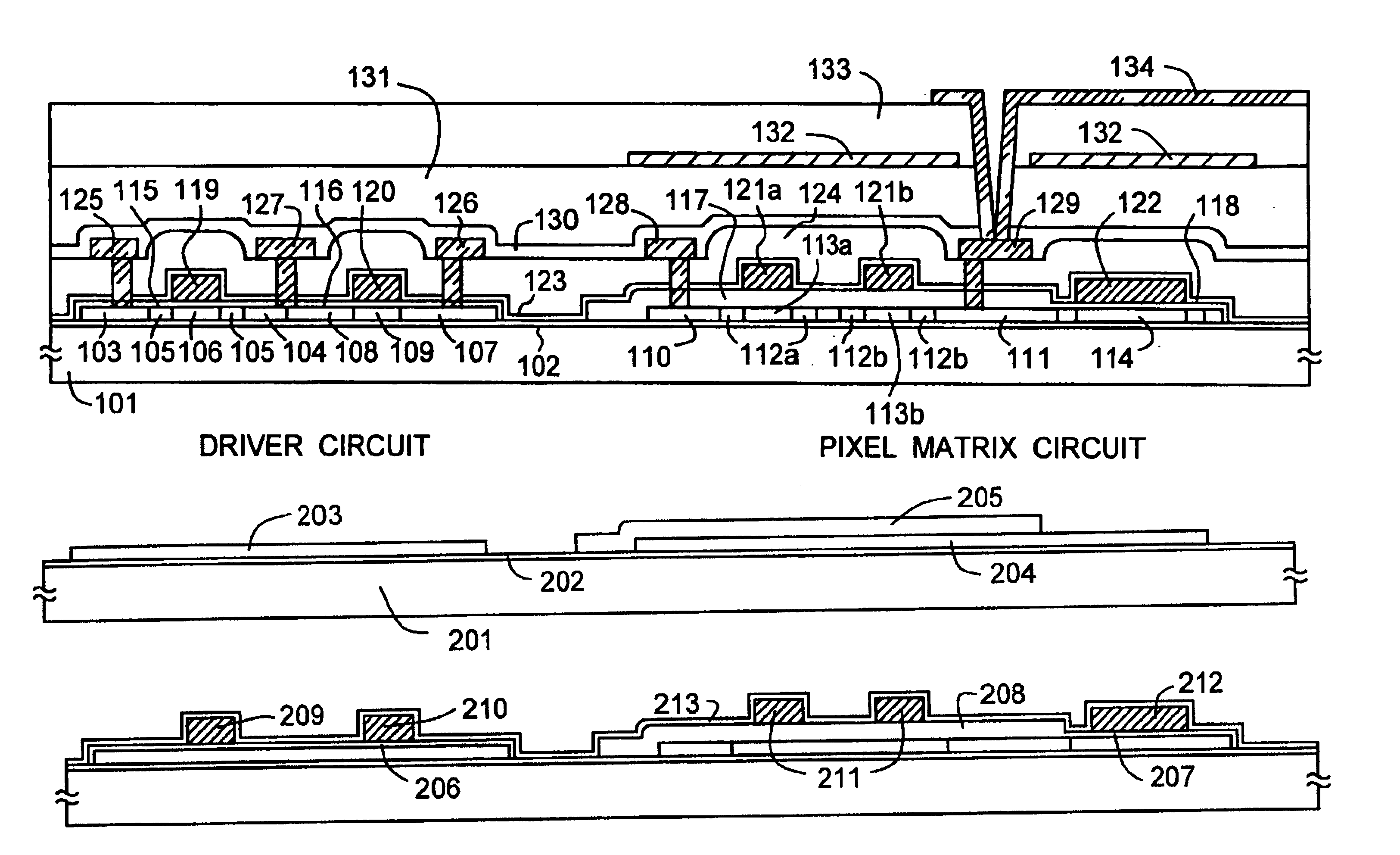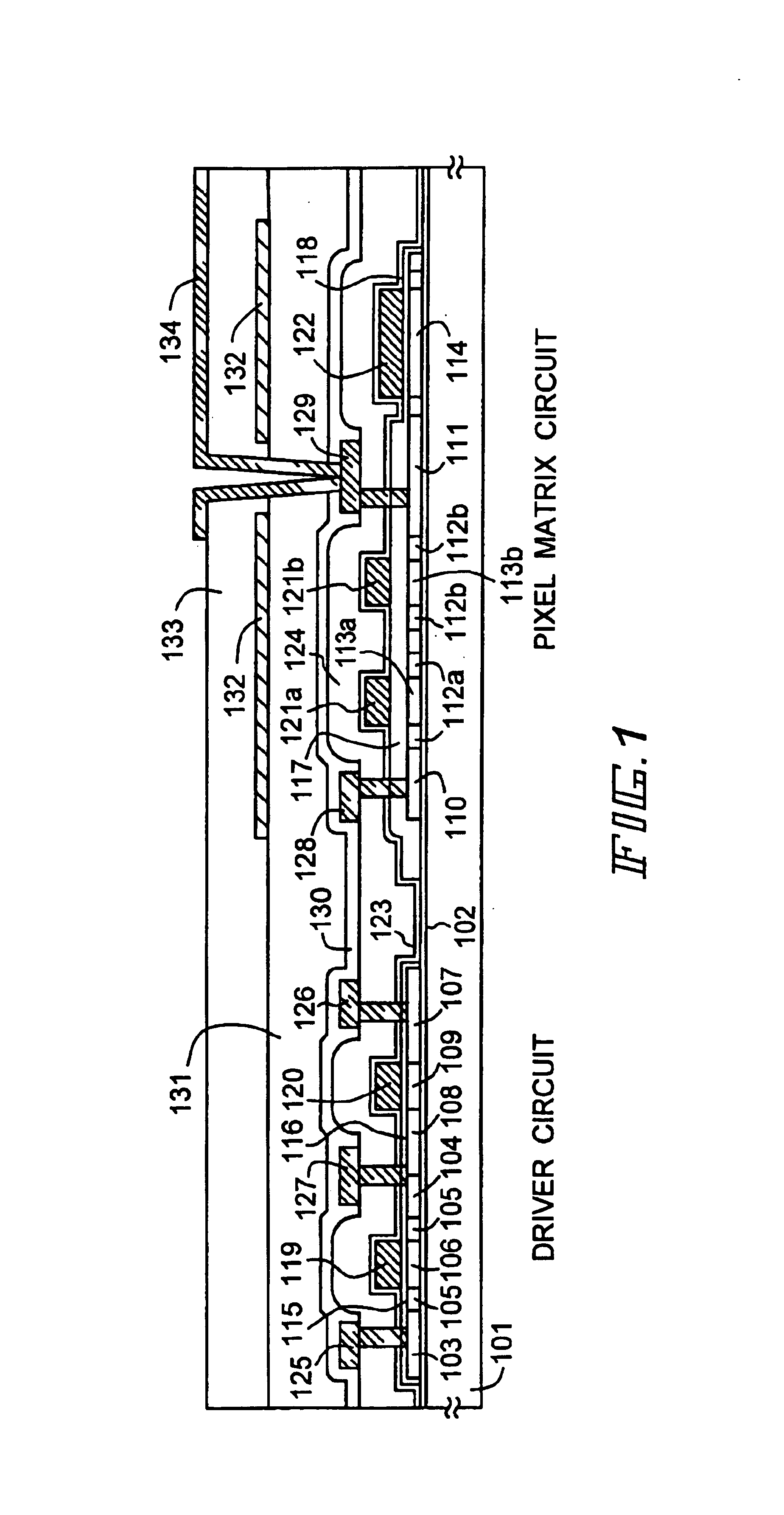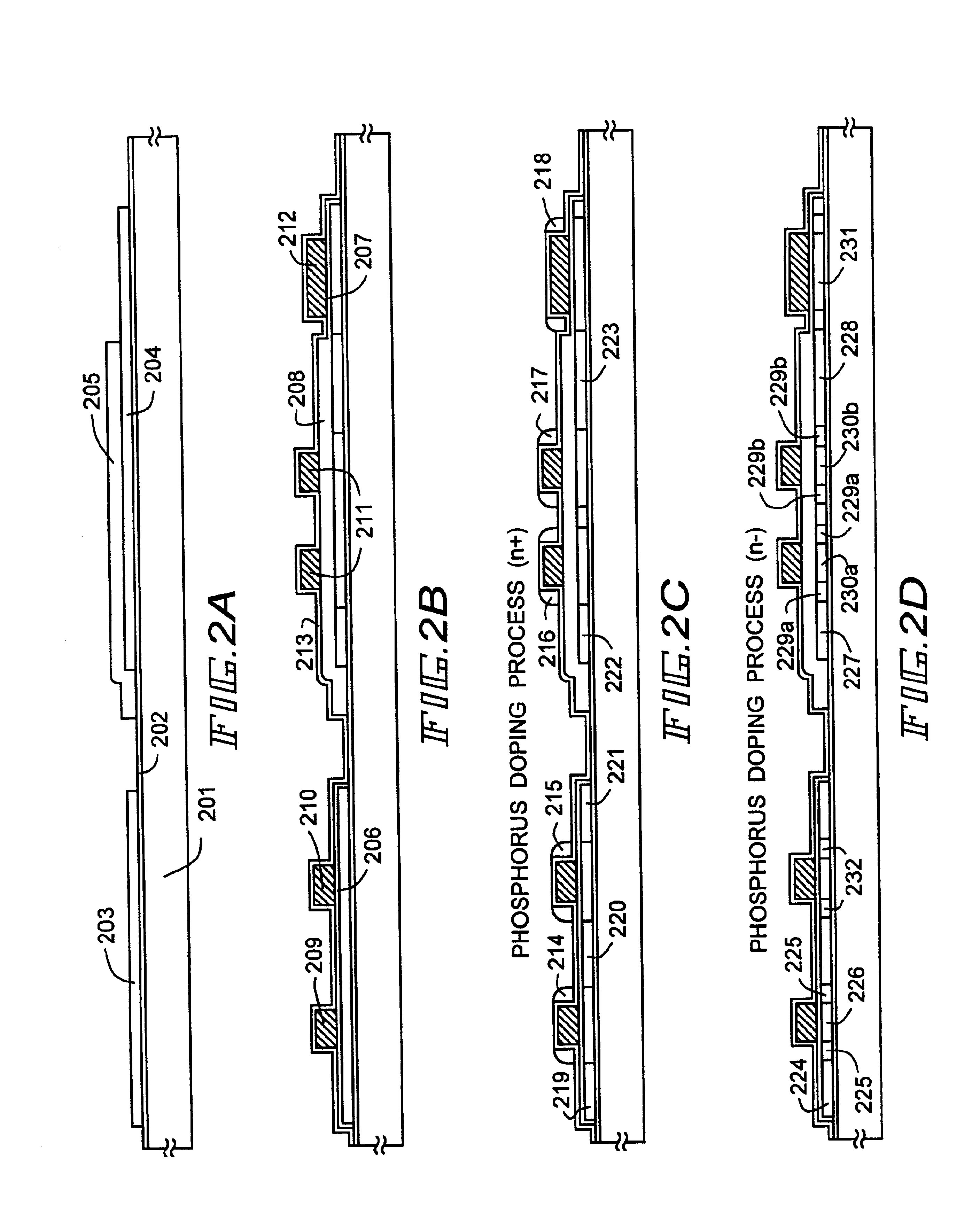Semiconductor device and manufacturing method thereof
- Summary
- Abstract
- Description
- Claims
- Application Information
AI Technical Summary
Benefits of technology
Problems solved by technology
Method used
Image
Examples
embodiment 1
[0127]The method of manufacture to realize the structure in FIG. 1, which is explained in the detailed description of the preferred embodiments of the present invention, is explained in embodiment 1. FIGS. 2A to 3C are used in the explanation.
[0128]First, a quartz substrate 201 is prepared as a substrate, and a 20 nm silicon oxide film 202 and an amorphous silicon film (not shown) are formed successively on top, without being released to the atmosphere. By doing so, impurities included in the atmosphere, such as boron, can be prevented from being absorbed with the lower surface of the amorphous silicon film.
[0129]Note that an amorphous silicon film is used in embodiment 1, but other semiconductor films may also be used. A microcrystalline silicon film is acceptable, as is an amorphous silicon germanium film.
[0130]Crystallization of the amorphous silicon film is performed next. The technique described in Japanese Patent Application Laid-Open No. Hei 9-312260 is used as the crystalliz...
embodiment 2
[0202]FIGS. 4A to 4D are used in embodiment 2 to specifically explain what type of TFT structures are placed in what kind of circuits.
[0203]The minimum required operation voltage (power supply voltage) differs for an AM-LCD depending upon the circuit. For example, considering the voltage applied to the liquid crystals and the voltage for driving pixel TFTs in the pixel section, the operation voltage becomes from 14 to 20 V. Therefore, a TFT which can withstand the application of that much high voltage must be used.
[0204]In addition, a shift register circuit, etc., used in a source driver circuit or in a gate driver circuit operates sufficiently at approximately 5 to 10 V. There are advantages of more compatibility with an external signal, and lower power consumption, the lower the operation voltage. However, operation speed is sacrificed as a substitute for good voltage resistance characteristics in the high voltage resistant type TFT stated above, and therefore it is not suitable f...
embodiment 3
[0217]During the selective removal process of the gate insulating film 205 in embodiment 1, it is desirable to perform removal in the regions which become driver TFTs and storage capacitors as shown in FIG. 5. In FIG. 5 reference numeral 501 denotes an active layer, 502 denotes an end section of the gate insulating film 205, and 503 and 504 denote gate wirings. It is desirable to leave the gate insulating film 205 in the end portion of the active layer 501, in areas 505 where the gate wirings overlap the active layer, as shown in FIG. 5.
[0218]A phenomenon called edge thinning occurs in the end portion of the active layer 501 when a later thermal oxidation process is performed. This is a phenomenon in which the oxidation reaction proceeds so as to dig under the end portion of the active layer, with the end portion getting thinner and at the same time rising up. Therefore, if the edge thinning phenomenon occurs, then a problem develops where the gate wiring is easily cut when the gate...
PUM
 Login to View More
Login to View More Abstract
Description
Claims
Application Information
 Login to View More
Login to View More - R&D
- Intellectual Property
- Life Sciences
- Materials
- Tech Scout
- Unparalleled Data Quality
- Higher Quality Content
- 60% Fewer Hallucinations
Browse by: Latest US Patents, China's latest patents, Technical Efficacy Thesaurus, Application Domain, Technology Topic, Popular Technical Reports.
© 2025 PatSnap. All rights reserved.Legal|Privacy policy|Modern Slavery Act Transparency Statement|Sitemap|About US| Contact US: help@patsnap.com



